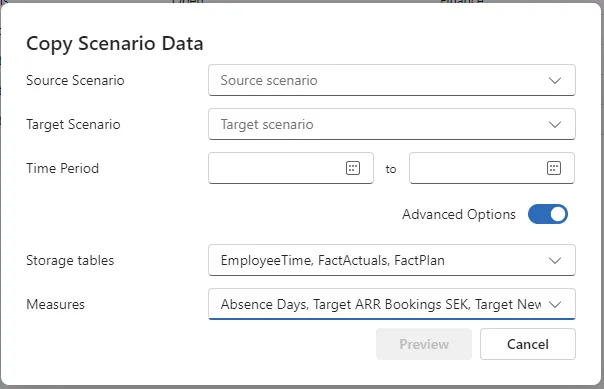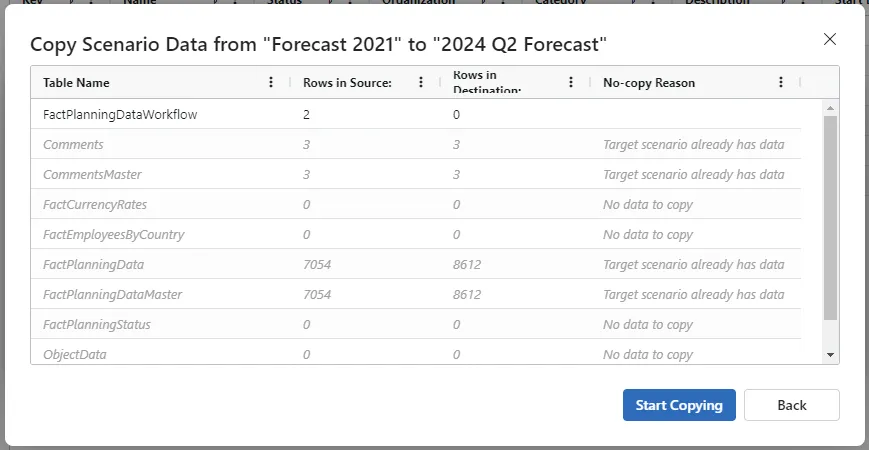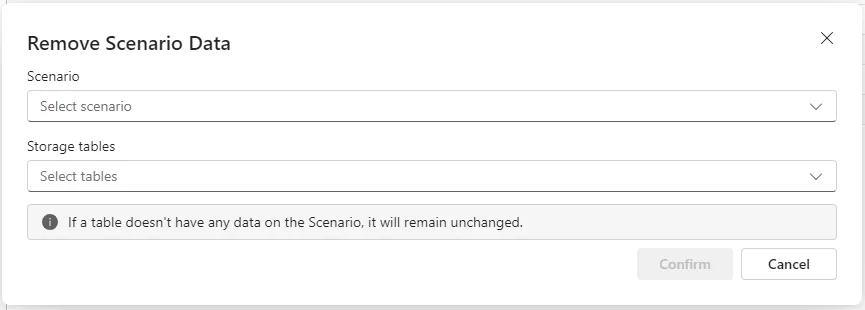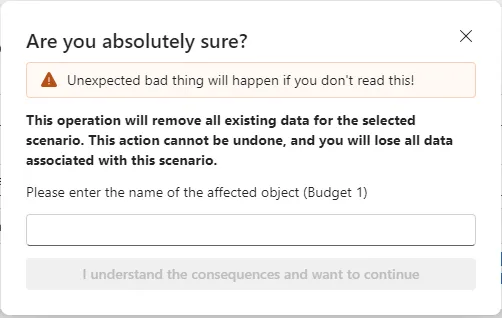Scenarios

Scenarios are used to store different alternative versions of future forecasts. This is a mandatory Aimplan system dimension. This implies that you must create at least one scenario to be able to store data using the Planning and Reporting Visual.
Scenarios can have different status. From the Planning and Reporting Visual data can only be stored on scenarios with the status 'Open'.

Click the 'Edit' button above the scenario table.
To add a new scenario, click the 'Add' button.
Enter data in the following fields:
Key - the unique Id or scenario key used to store data in the storage table. This may or may not be visable in Power BI to end-users depending on your design of your Power BI reports and forms.
Name - give scenario a name that clearly describes to the end-user what the scenario is all about
Set the status of the scenario. If set to 'Open' users can store and update data in the Power BI visual for the scenario.
See Organization and Categories to learn about how to manage organizations and categories.
In the menu "Scenario Data" you can choose to copy data from one scenario to another.

When you click this menu, following popup window appears.

Here you can choose from which scenario the data should be copied from and to which it should be copied to. If you want to limit the data between specific time periods, you can fill in the Time Period parameters. Only data that is between this time periods will be copied.
Note that the Time Period isn't referring to when the record was created or updated. It's the DateIntKey on the record that is used to filter out a time span. If a table doesn't contain a DateIntKey, this parameter will be ignored for that table.

If you toggle the Advanced Options you will find more parameters to use for filtering what to be copied.
Storage tables
Here can you choose which storage table that should be included in the copy. Only storage tables where the ScenarioKey column exists is showed in the list, i.e. that you also can copy data between scenarios in other tables than Fact tables as long the table contains the ScenarioKey column.
The ScenarioKey must be of type string and cannot be an integer. If a table contains a ScenarioKey column but it is of type integer, the table will show in the list but the copy will fail if the table is chosen in the list.
Measures
In this list you can filter out which measures that must be on a data record. Only the data with the selected measures will be copied.
If a Storage table missing the MeasureKey column, the filter will be ignored for that table.
When all filters have been set, you can safely click on the Preview button to see a preview of the copy. This can look like this:

In this list you will see all selected Storage tables and status of the copying. In the image above you can see that only one Storage table will be copied, "FactPlanninDataWorkflow". In this table it's two data rows that will be copied from "Forecast 2021" to "2024 Q2 Forecast"
All other Stoarge tables which are grayed out will not be touched. The reason for that is stated in the "No-copy Reason" column to the right in the list.
In the Scenario Data menu, you will also find the menu Remove.

When you click on this menu following dialog is showed:

Here you can choose one Scenario on which data will be removed. You can also choose one or more Storage tables to be included in the delete. Depending on the type of the Storage table, the removal is different.
For Fact tables, the records are not actually deleted, they are only marked as deleted and can be fetched in an audit trail.
For other tables than Fact tables, the records will deleted from the table and gone forever.
When you click on the Confirm button, you will need to verify your action by entering the Scenario key in the textbox before you can start the copy.
